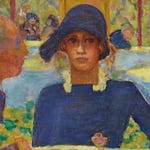First, a prerequisite bit of the history of Babbington.
There was a period, from the 1890s until the Great Depression, when Babbington was a resort town, a destination. Easily reached by rail, it drew people from New York for the summer. Several large wooden hotels were built at this time, and one grand house, the Nevsky mansion. (None of the large hotels survives, by the way. The old wooden hotel in which I am writing these words is a smaller and younger cousin.) Babbington was never a resort of the rich. It appealed more to the successful burgher than to the millionaire, more to the sergeants than to the captains of industry. When Babbingtonians first noticed that their beloved little town was changing—or being changed—from a working fishing village to a resort town, they began a debate about the purpose of the town. Briefly stated and oversimplified, the question at the heart of the debate was this: does the town exist to serve the residents or the visitors? It’s a debate that has lasted for generations. It waxes and wanes with tourist interest in the town, but it has never ended.
(I’ve often wondered about the point at which the transformation of Babbington from fishing village to “quaint little fishing village” can be said to have occurred. Imagine the photography enthusiast of the 1890s, toting a wagonload of gear to a spot across from a clam shack or boatyard and waiting for that moment when the light would give an attractive, romantic, atypical glaze to a shabby life lived at the margin of the sea, at the edge of prosperity. Now I ask you, how many visits from photographers such as this are required before the photographers’ target has become a photo opportunity, a view of a clam shack rather than an actual clam shack?)
Why, since Babbington was never at the top of the resort-town heap, did Stanislav Nevsky build his mansion here? Why not Great Neck, to offer one other possibility? The conventional wisdom is that his passion for photography—he had a wagonload of gear and could be seen prowling the streets of Babbington in the early light—brought him here and kept him here. Stanislav himself claimed that it was the simple desire to settle down and spend the later years of his life someplace quiet. “It’s getting late,” he said, by way of explanation, and in later years, after his death, that explanation became known in Babbington as his “motto.” However, I think there may have been another reason. I think Nevsky came to Babbington, rather than building on the North Shore or farther to the east, because in Babbington he could be the big fish in a small pond. His carryings-on with the local maidens support this theory, but that is another story.
Whatever his reasons for choosing Babbington, Stanislav had an effect on the town that endured beyond him, for after his mansion had burned and he had vanished, there was something left behind, something that lived in the shell of the Nevsky mansion—not a ghost, but a possibility, a hope, the enlivening possibility that something further would come of it, that its part in Babbington’s history hadn’t been played out, that, say, some scion of the Nevsky family, fabulously wealthy, might come out of the West, maybe under a cloud, some interesting Nevsky, someone a little strange, who would rebuild the place, occupy it, and give Babbington something new to think about, to talk about, to tell stories about. It was a storyteller’s hope. Others may hope that life will go on, but the storyteller hopes that life will go on in some interesting way, that it will bring things worth the telling.
Years later, of course, that’s what happened. Dan Nevsky, the filmmaker, came out of the West, under a cloud, bringing the money he had made in movies, and restored the old place, took up residence there, landscaped it to within an inch of its life, began breeding miniature livestock, and began making those fake documentaries of his, the films he called “fictofactos,” set in Babbington, starring Babbingtonians—but that is another story, and I really must be going. If I don’t get to the Glynns’ house in a hurry, we’ll be late for the movies.
[to be continued]
Have you missed an episode or two or several?
You can begin reading at the beginning or you can catch up by visiting the archive or consulting the index to the Topical Guide. The Substack serialization of Little Follies begins here; Herb ’n’ Lorna begins here; Reservations Recommended begins here; Where Do You Stop? begins here; What a Piece of Work I Am begins here; At Home with the Glynns begins here.
You can listen to the episodes on the Personal History podcast. Begin at the beginning or scroll through the episodes to find what you’ve missed. The Substack podcast reading of Little Follies begins here; Herb ’n’ Lorna begins here; Reservations Recommended begins here; Where Do You Stop? begins here; What a Piece of Work I Am begins here; At Home with the Glynns begins here.
You can listen to “My Mother Takes a Tumble” and “Do Clams Bite?” complete and uninterrupted as audiobooks through YouTube.
You can ensure that you never miss a future issue by getting a free subscription. (You can help support the work by choosing a paid subscription instead.)
At Apple Books you can download free eBooks of Little Follies, Herb ’n’ Lorna, Reservations Recommended, and Where Do You Stop? and What a Piece of Work I Am.
You’ll find overviews of the entire work in An Introduction to The Personal History, Adventures, Experiences & Observations of Peter Leroy (a pdf document), The Origin Story (here on substack), Between the Lines (a video, here on Substack), and at Encyclopedia.com.












